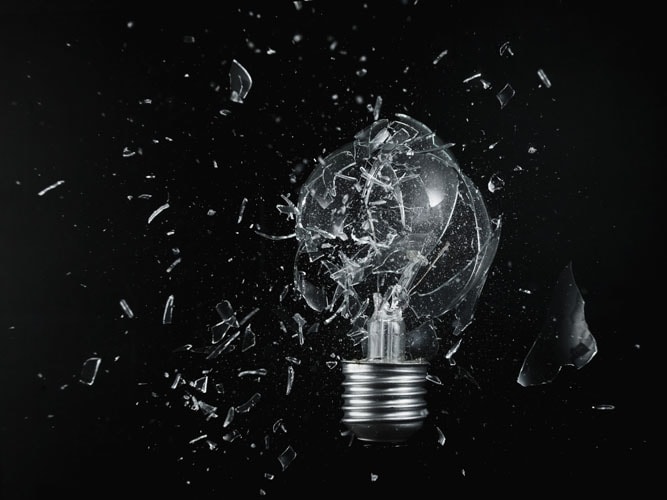
Put Out the Lights
The European Union switches off the light bulb, but it will continue to burn bright as a symbol of the birth of an idea
In Swades, a film about the extremely slow march of technological progress towards the Indian hinterland, when Shah Rukh Khan’s character manages to generate electricity, a light bulb flickers inside a hut. No other invention of mankind symbolises the advent of technological age more powerfully than this gadget.
In this simple device mankind’s mastery over electricity, chemistry, metallurgy and metal artistry come together. To emit light the tungsten filament inside the bulb heats up to almost 3,300 degree centigrade. To heat up at that temperature, the filament has to be extraordinarily thin — one-hundreth of an inch — and extremely long at 6.5 feet. The longer and thinner the filament, the more it opposes the flow of electricity, and the more it heats up and emits light. Then it has to be packed inside a small glass package. The package itself is in complete vacuum to prevent the filament from going poof! and vapourising.
The European Union just said goodbye to all the ingenuity. It banned the manufacture or sale of light bulbs from September 1, 2009. By 2012, existing light bulbs will be discarded.
Cuba banned its sale or import in 2005, launching a nationwide campaign for compact fluorescent lamps (CFL). In 2007, Australia banned the use of the 100 watt bulb and is likely to phase it out by 2010. The US will begin to phase out incandescent bulbs in 2012. Even in India, the Bureau of Energy Efficiency has launched several programmes to replace incandescent bulbs with CFLs.
“Life is about change for the better. What we have today justifies the change of a 120-year-old technology,” says Kishore Jayaraman, president & CEO of GE Energy in India, Sri Lanka and Bangladesh. GE is the child of the Edison Electric company, founded by Thomas Edison, inventor of the bulb.
But like the light bulb ushered us into the modern age, it is now showing us the world, post-climate change. According to the European Commission, the switch to CFLs in the EU will save 40 terawatt hour (TWh) annually by 2020 — the equivalent of 11 million European household’s energy usage for the same period. It will reduce up to 15 million tonnes of CO2 emissions a year.
But, not everything is good about these new technologies. You could just toss a used incandescent bulb in the trash can and not worry about it. But, a CFL has to be disposed with care as it contains mercury. “A user must be sensitive to the fact that there is the environment to protect,” says Jayaraman.
The incandescent will surely be out of our daily lives but it is unlikely that its symbolism will meet the same fate. When a bulb lights up, it is symbolic of an idea. “In a comic strip, you won’t see an LED lighting up on somebody’s head when he has an idea. It is going to be the incandescent bulb,” says Piyush Pandey, executive chairman at Ogilvy & Mather. Pandey’s advertising campaign for Lenovo in which he played a key role, was all about ideas and light bulbs. “The symbolism of a light bulb will never end, it will remain in its simplest form as an idea,” he adds.
(This story appears in the 25 September, 2009 issue of Forbes India. To visit our Archives, click here.)















